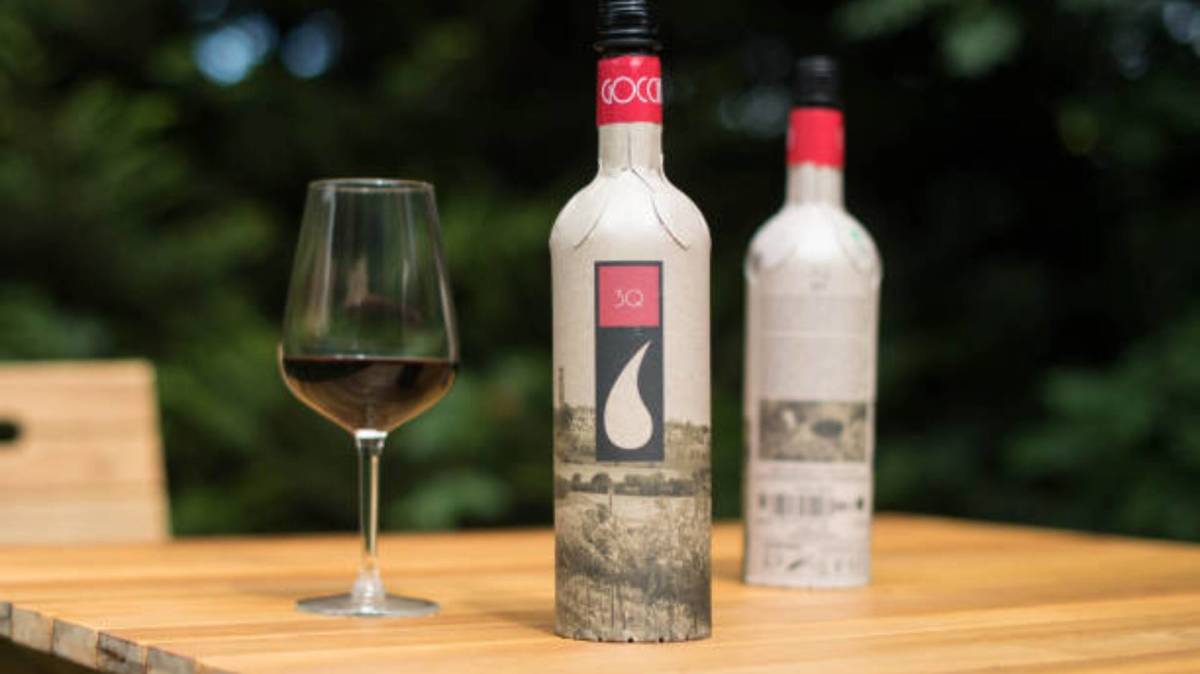The ingredients used to make wine bottles have not changed much over the past 400 years. That’s when winemakers started using glass that they recognize today.
One reason for the lack of innovation is that the glass is made from natural materials. It is also clean, relatively durable, can taint and absorb odors, is easy to transport and recyclable.
Subscribe to Modondonthe The Move: Thestreet’s free daily newsletter
Still, there are only about 20% of the wine bottles that are actually recycled. That’s one reason why some people in the industry are looking for a broader bottle deposit return law. Currently 10 The nation has they.

Paper bottles reduce carbon dioxide emissions
Wine (and other liquors) in glass bottles are required in terms of carbon emissions. The process of creating a bottle requires melting materials such as silica, limestone, and carlet (broken glass pieces) at very high temperatures at 2,800 degrees, producing significant carbon footprints.
Class bottle production accounts for 51% of wine’s carbon footprint. After that, there will be a shipping fee. Glass bottles are heavy, so transporting them is another demand, accounting for 10% of CO2 emissions.
Related: Costco quietly saves money by making big changes
Some companies are looking at ways to make lightweight glass, but these efforts have not made much of a meaningful change.
Today, the UK company offers bottles made from recycled paper as a way to “decarbonize the food and drink industry.”
Fulgal Pack, which makes simple cups for food (e.g. ice cream) and simple bottles for wine, has a food-grade liner pouch that the company says is five times lighter than glass. Overall, the bottle has six times lower carbon footprint than glass.
Target sees sustainability opportunities
Frugalpac has created colorful paper wine bottles in 2020 and is working with a handful of US winemakers to distribute wine.
Until this month, the company’s wine products were only available at the specialty food Whole Foods. However, Frugalpac has just announced a contract with Target and will sell wine at 1,200 Target locations in the US
Frugalpac’s Collective Good Wine Line includes a red blend from Spain, a Chilean Sauvignon Blanc, a California Cabernet Sauvignon and an Italian Pinot Grigio, all starting at $9.99.
Related: Trader Joe’s fan favorite desserts are back in stock, finally
The wineries included in the Target launch were specially selected for their individual commitment to quality and sustainability.
Frugalpac says the bottle weighs 83 grams (about one-fifth the weight of a glass bottle). Once a consumer removes the bottle’s fiber shell from the polyethylene liner, the outer part of the bottle can be placed along with the rest of the recycled part.
Other Food News:
- McDonald’s Starbucks targeted at rival fast food chain takeover
- Popular retailers unveil unexpected brands and affordable lines
- Oreo celebrates his 113th birthday and regains his fan favorites
The Target Collaboration, which includes 256,000 bottles of wine, offsets 100 tons of carbon dioxide compared to the use of glass bottles.
“We are proud that Target has made this commitment to collectively profiting all retailers,” Fulgalpack CEO Malcolm Waugh said in a statement. “This is a great support for sustainable low-carbon packaging that can provide a great taste but is less wasteful.”
Frugalpac will also be rolling out wines at its 500 7-Eleven locations later this year.
Related: Veteran Fund Manager Announces Eye-opening S&P 500 Forecast







